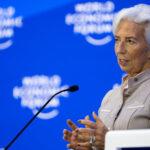This, for instance, was recently highlighted by Ms. Sheila Warren, Data and Technology Head and member of the Executive committee at the world Economic Forum-WEF, in her recent article Four predictions for blockchain in 2021 – from cryptocurrencies to art.
Nevertheless, in this scenario driven by the technofinance, how is supposed to evolve the relation between the public and private sectors, particularly in the field of digital money?
At a first glance, the matter seems to be of interest only for scholars. In fact, looking at the other side of this two-faced dilemma, another in-depth question must be dealt with and solved.
As the combination of digitalization and artificial intelligence-AI will be necessary to cope with the global needs of our societies, how to balance the activities carried out by the public sector, traditionally innovative but profit-driven, with the presence of the private sector, whose main focus is to provide stability and state-guaranteed set of rules?
How these two apparently opposite attitudes may cohabit, and outweigh each other?
The answer will definitively appeal also to a larger audience: the investors. Following the sudden sky-rocketing price-rise of cryptocurrencies such as the bitcoin, privately-owned but fuelled by worldwide investments from the general public, the question poses itself more urgent than ever: how can public and private sector may work together in the field of finance?
According to the recent article Public and Private money Can Coexist in the digital Age, published by Tobias Adrian, Financial Counsellor and Director of the Monetary and Capital Markets Department, and Tommaso Mancini-Griffoli, Deputy Division Chief in the Monetary and Capital Markets Department, both in force at the International Monetary Fund-IMF, the financial side of the World Bank, i.e. the banking department of the United Nations Organization-UNO, public money and private money can peacefully live together despite each is pursuing a different goal. According this IMF-published information, “today’s world is charactererized by a dual monetary system”, i.e. private and public.
With the ongoing surge of digitalization this balanced dialogue is now ready to evolve: the emersion of digitalized cash (so called Central Bank Digital Currency-CBDC) is not supposed to displace privately-issued money in so far as “Central banks make certain design choices and refresh their regulatory framework”.
The two systems, the scholars continue, are related by a “fundamental symbiotic relationship: the option to redeem private money into perfectly safe and liquid public money”. In other words, also the “privately-issued money becomes an efficient means of payment to the extent it can be redeemed into central bank currency”.
Furthermore, by this virtuous circle, both these monies become interoperable, and enhance reciprocal competition-innovation-diversity between themselves.
From this point of view central banks “would thus have to become more like Apple or Microsoft in order to keep their CBDC on the frontier of technology”, following a “settlement technology allowing money to be stored and transferred, much like bits sent between a phone’s processor, memory and camera”.
To put it simple: CBDC are destined to evolve according the digital fashion actually followed by the privately-issued money.
At the same time, also the private sector must be getting itself ready to comply with new consumer demands: “user needs and expectations are likely to evolve much more unpredictably in the digital age”, imposing “new features of money and thus frequent architectural redesigns, and diversity”.
To summarize, according the IMF’s scholars, “tomorrow’s money is unlikely to meet the needs of the day after”.
At the present two evolutive pattern are on their way to emerge: “first, a CBDC maybe designed to encourage the private sector to innovate on top of it, much like app designers bring enticing functionality to phones and their operating systems”. According this statement a message seems to stand clear: CBDC is requested to become more private-customers’ friendly.
“Second”, according the IMF’s publication, “some central banks may even allow other forms of digital money to coexist, much like parallel operating systems. For example, one digital currency might compromise on settlement speed to allow users greater control over payment automation”.
This procedure, according the IMF’s economists, will open the way to a mutually beneficial coexistence of privately and publicly issued digital currencies and assure for both to be considered by the general public as a stable store of value and a mean of payment altogether, easy to settle, as today happens for on accounts held in the same bank, where they both rely on the same regulatory compliance background.
In conclusion, according the IMF’s remarks, “if and when countries move ahead with central bank digital currencies, they should consider how to leverage the private sector”.
It will probably take time before this goal to become fully operational and achieved.
But the mindset to proceed is already there, ready to get started.
















